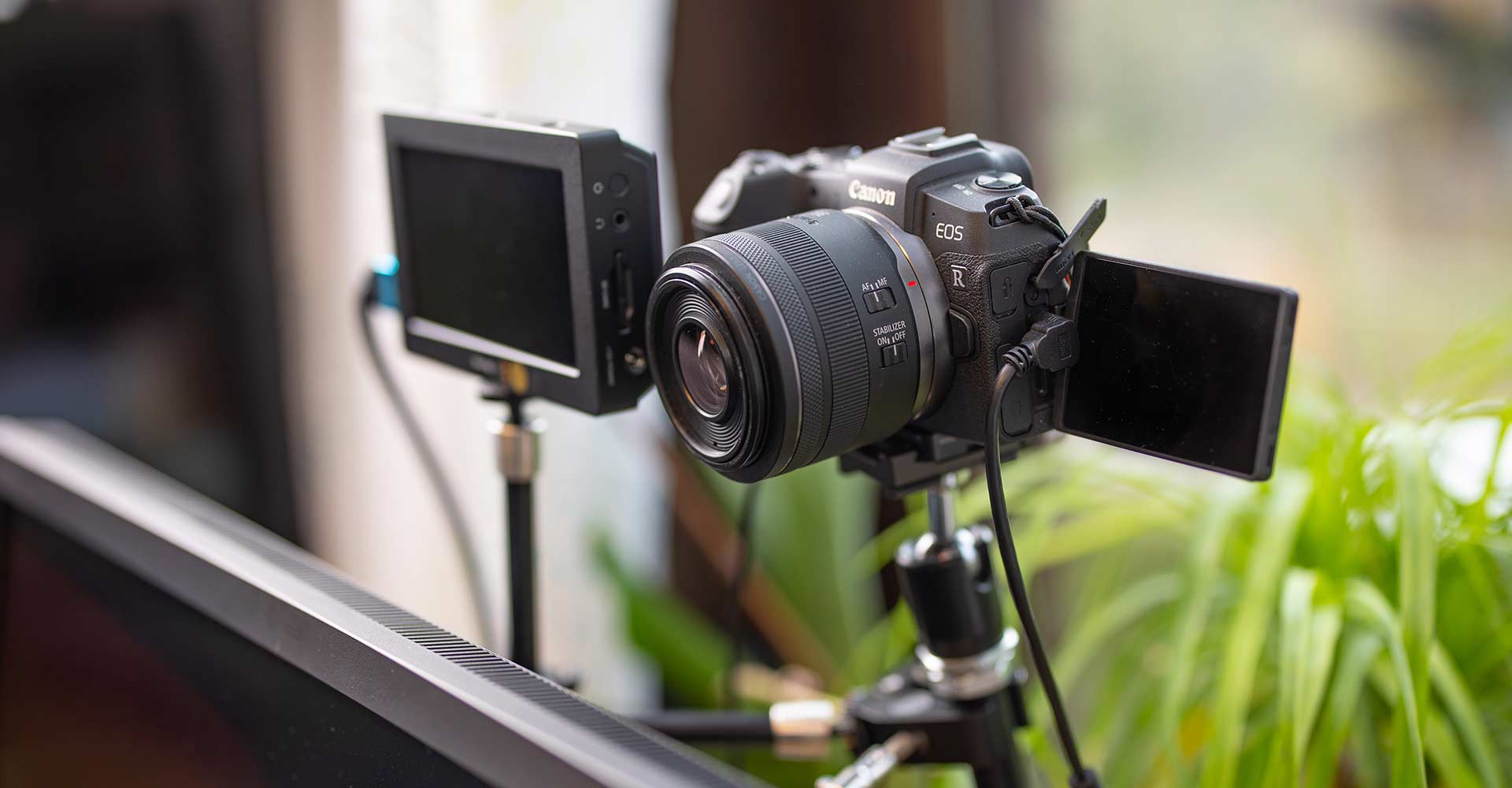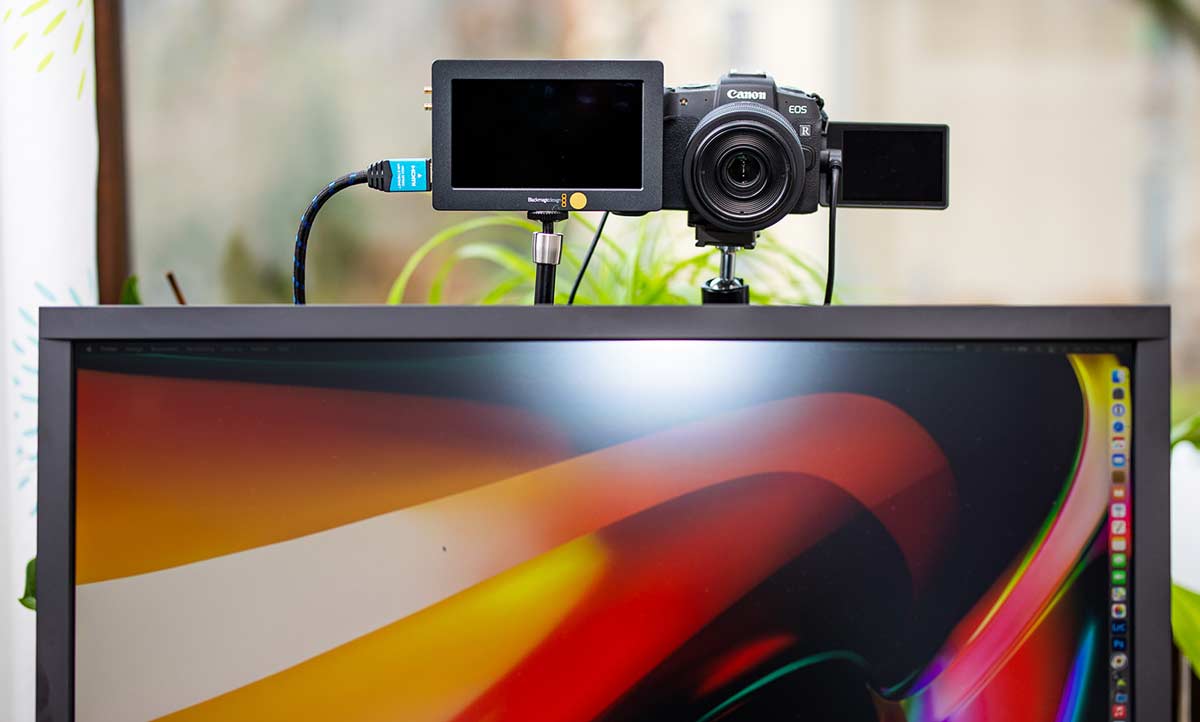
With the EOS Webcam Utility software, you can hold professional online meetings or provide video streams with first-class image quality. Olaf Franke explains what you need to consider for an ideal video conferencing and steaming experience.
The current situation demands physical distance and a reduction in contact. Online meetings and video conferencing are the tools of choice to keep in touch with friends, clients or customers. The Canon Webcam Utility software allows you to use an EOS or PowerShot camera as a webcam. The tool works with many popular web conferencing systems.
Use your Canon camera as a webcam
With your EOS as a webcam, you don't need an additional camera to broadcast images. You also benefit from the image quality of your Canon camera, which is far superior to that of conventional webcams (whether connected externally or built into your laptop or monitor).
What's more, you can eliminate the artificial blurring effects of some videoconferencing systems and use the true optical effect of shallow depth of field. This not only makes the image look better, but also reduces the load on your computer. Your camera's autofocus system - which, depending on the model, can even use Eye AF to focus on your eyes and automatically track your movements - is particularly useful for videoconferencing.
The right lens
To maximise the background blur effect, it is best to use a fast lens, ideally with an aperture of f/2.8, f/2.0, f/1.4 or higher. Please note the following: The faster your lens, the shallower the depth of field of your camera's image, i.e. the area in the depth of field that is correctly focused. In other words, the smaller the aperture of your lens (i.e. the higher the f-number), the larger (deeper) the area of the image that is in focus. The distance between you and your camera and the focal length used also play an important role in depth of field. The shorter the distance, the shallower the depth of field; the same applies to the focal length.
If you are the only person in the room, the RF 35mm F1.8 IS STM Macro lens is a very good choice for a full-frame camera such as the EOS R6. On the EOS M50 Mark II with the smaller APS-C sensor, an EF-M lens with a focal length of 22mm shows the same image section as the 35mm lens on the full-frame sensor (crop factor 1.6).
The installation process
Installing the Webcam Utilities is a breeze: First download the software from Canon, then double-click to start the installation process - that's it! By the way: If you have installed the beta version of the Mac software, there is no need to uninstall it. The new version will completely overwrite the existing beta installation.
Camera settings
Switch your camera to video mode and select Full HD (FHD) with 25.00 or 50.00 fps as the video quality in your camera setup. The auto-power-off function should be turned off and the focus mode should be set to Movie Servo AF. For ISO settings, select automatic mode 'A'. This allows the camera to respond automatically to changing lighting conditions.
Connect your camera to your computer using a USB cable. In your video conferencing software (Zoom, Teams, Webex, etc.), select "Canon Webcam Utility" as the video source in the settings.
For longer web conferencing sessions, it is worth using a continuous power source rather than battery operation. Power adapters are available as Canon accessories for your camera.
Tip: Your video transmission will look more professional if you look into the camera while speaking or listening. Try to position the camera at eye level and close to your screen. Use a tripod if necessary. Ensure that the cables are routed properly to avoid any risk of falling.
Good lighting is also important. An LED video light from a specialised retailer, mounted at an angle of about 45 degrees to the side and slightly raised, is ideal. The same rules apply to lighting as for photography. A soft, directed light is ideal for a videoconference with people.
Finally, you can improve the quality of voice transmission by using an external microphone.
.png)
.png)
